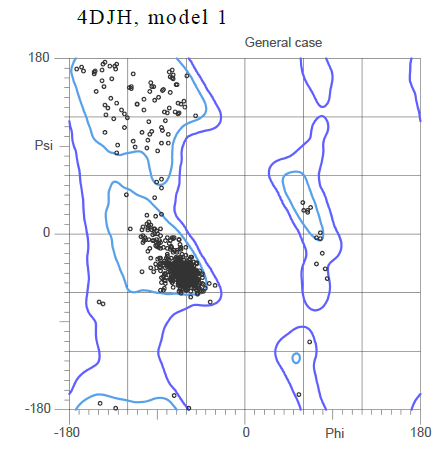Sandbox Reserved 427
From Proteopedia
Ásliding right into the DMs
| This Sandbox is Reserved from January 19, 2016, through August 31, 2016 for use for Proteopedia Team Projects by the class Chemistry 423 Biochemistry for Chemists taught by Lynmarie K Thompson at University of Massachusetts Amherst, USA. This reservation includes Sandbox Reserved 425 through Sandbox Reserved 439. |
Kappa-Opioid Receptor
IntroductionThis scene is of the within the Kappa Opioid Receptor by Group 3.
-"Kappa-Opioid receptors mediate the regulation of pain, respiratory drive, mood"
Overall StructureCopy and paste the following line where you want the scene link to appear (scroll down if needed) and edit the TextToBeDisplayed:
-describe the overall size of the molecule: how massive it is, how many alpha helices and beta sheets it contains. -describe the two different dimmers that form the protien and how and along which alpha helices the dimmers coordinate with each other -describe how the protein fits in the cell membrane, how much is contained in the membrane. -describe which parts are conserved and which parts make it a unique molecule like how the sulfide bond near the n-terminus among other feature distinguishes itself from CXCR4 -describe the structure and shape of the binding pocket, discuss how these structural conformations make it unique.
Binding InteractionsActive Site of kappa Opioid Receptors Common Ligands of Opioid Receptors The majority of endogenous opioid peptides have a defined preference to specific subtypes, for example, endorphins act via DORs and MORs, whereas dynorphins preferentially activate KORs. Several KOR selective partial agonists and antagonists have been developed as potential antidepressants, anxiolytics, and anti-addiction medications, whereas a widely abused, naturally occurring hallucinogen Salvinorin A (SalA) was also found to be a highly selective KOR agonist [2]. See Reference 2 for more information. Agonists Salvinorin A - Mechanisms, Structure, and Effects
Antagonists JDTic - Mechanisms, Structure, and Effects
Additional FeaturesThe k-opioid receptor is a protein, with inter-membrane alpha helices displayed in red. A hydropathy plot for this receptor reinforces this fact, with a large span of the molecule shown again as trans-membrane alpha helices.
Based on the Ramachandran plot for the general case showing the standard phi and psi angle, it can be inferred that the majority of the secondary structure is composed , with the alpha helices shown in purple and the beta sheets shown in yellow.
The large cluster of dots shown close to the origin of the plot corresponds to small angles that imply an alpha helix.
Quiz Question 1Why might the , highlighted in blue, be located here in the protein? (Explain how its location and other properties of the protein maintain binding specificity.) What basic conformational changes may the protein undergo while binding to ligands?
Quiz Question 2What properties and functional groups would a substrate binding to the active site of the Kappa-opioid receptor probably possess? Explain your reasoning. See Also
CreditsIntroduction - Patrick Harney Overall Structure - Matthew Long Drug Binding Site - Brandon Kittredge Additional Features - Jacob Kellet Quiz Question 1 - Leah Caffrey Quiz Question 2 - Bridget Kilkenny References1. Chavkin C., The Therapeutic Potential of κ-Opioids for Treatment of Pain and Addiction. Neuropsychopharmacology. 2011;36:369–370. 2. Wu H., Wacker D., Mileni M., Structure of the human kappa opioid receptor in complex with JDTic. Nature. 2012;485:327-332. PMID:22437504 3. Martinez-Mayorga K., Byler K., Yongye A., et al. Ligand/kappa-opioid Receptor Ineractions: Insights from the X-Ray Crystal Structure. Eur J. Med. Chem. 2013; 66: 114-121. | ||||||||||||

